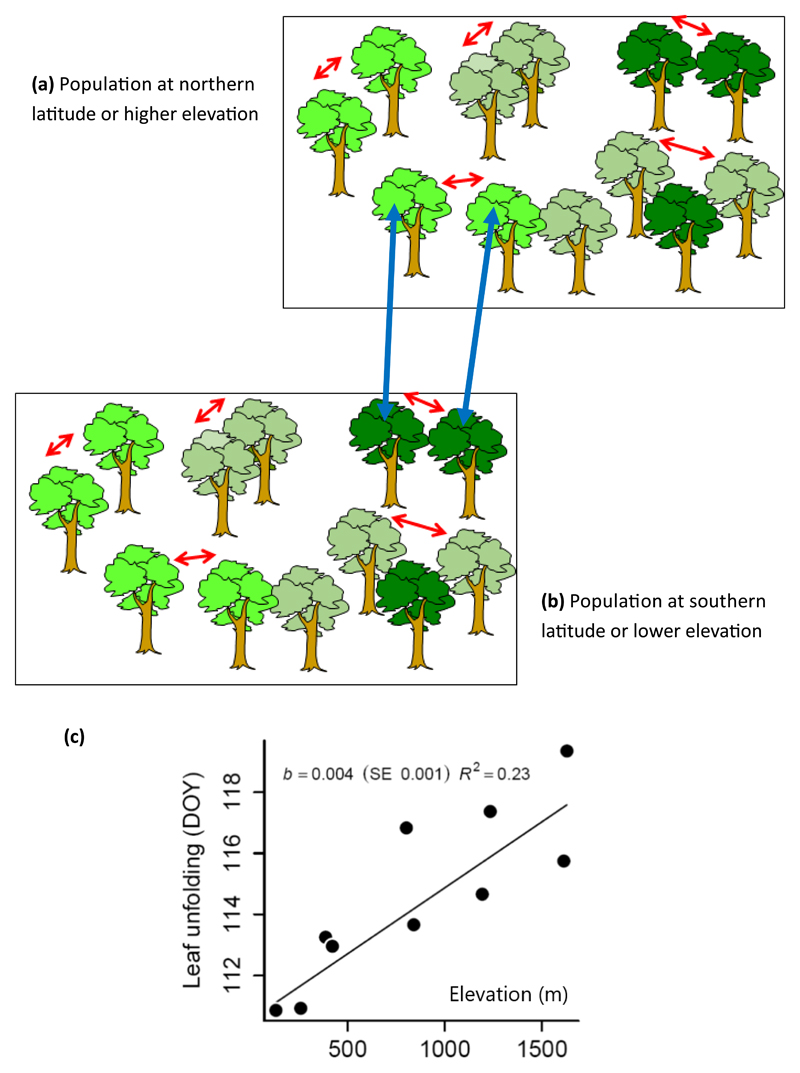As bud phenology is correlated to the growth rhythm and to flowering in oaks, it
is intensively studied in microevolution. The discovery of very large within and
between population genetic variation has raised numerous questions about the
mechanisms maintaining its evolutionary potential and its contribution to local
adaptation. In addition to common evolutionary drivers as gene flow, and
selection, assortative mating has a significant contribution to phenological
responses of oak populations. This figure illustrates how gene flow and
assortative mating shape clinal genetic variation between populations of higher
latitude/elevation (a) and lower latitude/elevation (b).
-
a)
and b) Within natural populations early flushing trees tend to mate
with early flushing trees, resulting in positive assortative mating.
Trees with similar phenotypes regarding date of bud burst
preferentially mate within populations. Positive assortative mating
is shown by red arrows between trees sharing similar colours on
graph a) (colours indicate here the timing of bud burst). However
matings resulting from immigrant pollen flow are likely to result in
negative assortative mating especially if source populations are
farther away in latitude or elevation. Populations at northern
latitudes or higher altitude flush on average later than populations
from more southern latitudes or from lower elevations because of
temperature differences. Hence successful matings resulting from
pollen flow can only associate late flushing trees from the south
(or low elevation) to early flushing trees in the north (or at
higher elevation) (negative assortative mating shown by blue arrows
on b). As a result, assortative mating and gene flow contribute to a
directional filtering of late flushing genes to the northern (or
higher elevation) populations (
Soularue & Kremer, 2012;
Soularue & Kremer, 2014).
-
c)
Within population positive assortative mating generates higher within
population genetic variance, whereas negative assortative mating and
gene flow creates genetic clines along temperature gradients in the
landscape, as shown here by the genetic divergence of the time of
bud burst along an elevational gradient in sessile oak in the
Pyrénées (
Firmat
et al., 2017)

